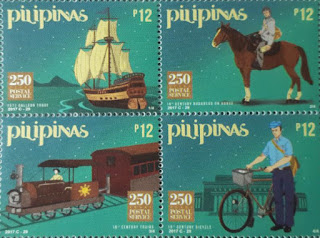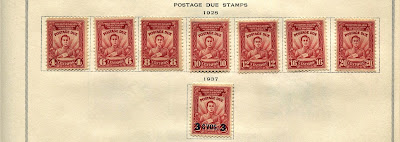A grand neo-classical structure (above), it would be impressive
if it were situated along the Potomac River in Washington DC, but its pillared symmetry
is absolutely stunning along the Pasig River front, downtown Manila. Whether viewed from the north on the Jones or the
McArthur bridge or from the south on Taft Avenue, it makes an unforgettable statement
about American colonialism. Construction started in 1926 and ended four years later.
Juan Marcos Arellano, a
Philippine architect, is remembered both for the post office and the Jones Bridge.
Trained at Pennsylvania Academy of the Fine Arts and Drexel University,
Arellano had worked for Frederick Law Olmsted, Jr., before returning to the
Philippines. He designed many of Manila’s outstanding buildings.
The post office is, in
part, a completion of the vision that William Howard Taft had pursued. After
the Spanish American War, he was dispatched to the Philippines to promote
economic and social development. In 1901, he became the first civilian governor
general. Arellano’s brother, Arcadio, served as an architecture
consultant to Taft.
Manila’s post office and
the Jones Bridge were significantly damaged by Japanese bombs during World War
II. Arellano, still active as an architect and artist, participated in the
reconstruction.
The extent of damage is
shown on the above 1945 postcard; it was copied for Scott #3056a, part of a
series celebrating a 2006 postal anniversary. (I have in my collection several picture
postcards with stamps on them, but this is my only stamp with a picture
postcard on it.)
A complete collection of Philippine stamps will have many views of the Manila post office; they pop up especially often in the 21st century. Scans of some of these follow. Apparently the disdain some Philippine folks plainly feel toward American colonialism does not extend to their main post office.
Census: 217 in BB spaces, three tip-ins, 92 on supplement
pages.
For a more complete listing, see https://topicalphilippines.com/Buildings/Post_Office_Building.html


















































No comments:
Post a Comment